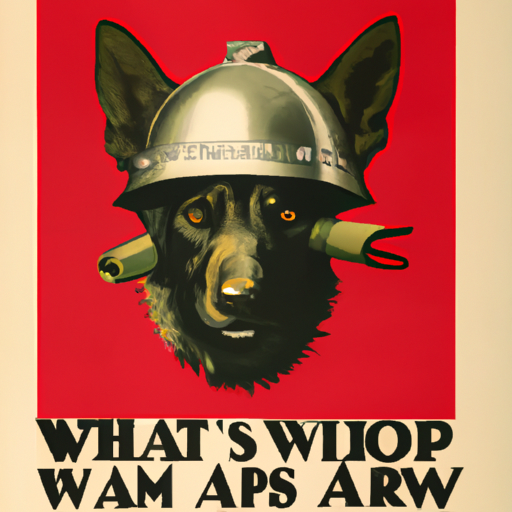War dogs, also known as military working dogs, play a critical role in the armed forces. They are trained to perform a wide range of tasks that contribute to military efforts, from detecting explosives to providing emotional support for soldiers. This article dives deep into the world of war dogs, exploring their history, the types of roles they play, and the challenges they face.
Contents
- A Brief History of War Dogs
- Roles of War Dogs
- Breed Selection for War Dogs
- Training Process for War Dogs
- Challenges Faced by War Dogs
- The Heroic Tales of War Dogs
- Frequently Asked Questions
Key Takeaways
- War dogs have been used in military efforts for centuries and have served in a variety of capacities.
- Different breeds are selected for different tasks based on their inherent traits and capabilities.
- The training process for war dogs is rigorous and multifaceted.
- War dogs face numerous challenges, including physical danger and post-traumatic stress disorder (PTSD).
- There are countless stories of war dogs displaying extraordinary bravery and dedication in the line of duty.
A Brief History of War Dogs
War dogs have a storied history that dates back to ancient times. They were used in various capacities, from sentinels to attack dogs. The Romans, for example, used large breeds like the Molossus in battles. In more recent history, dogs have served in both World Wars, the Vietnam War, and the ongoing conflicts in Iraq and Afghanistan. You can learn more about the history of war dogs at the United States War Dogs Association.
Roles of War Dogs
War dogs are trained to fulfill several roles in modern warfare. These include:
- Detection Dogs: These dogs are trained to sniff out explosives and drugs. They have an extraordinary sense of smell that makes them highly effective in these roles.
- Patrol Dogs: These dogs are used to guard military installations and to detect enemy forces. They are often paired with a handler and work closely with them.
- Search and Rescue Dogs: These dogs are used to locate missing soldiers and civilians in war zones. Their keen sense of smell and ability to navigate difficult terrain make them invaluable in these situations.
- Therapy Dogs: These dogs provide emotional support to soldiers, helping to alleviate stress and improve morale.
Breed Selection for War Dogs
Not all breeds are suited to every task. The breed selection for war dogs is based on the dog’s inherent traits and capabilities. For example, German Shepherds, Belgian Malinois, and Labrador Retrievers are often used as detection dogs due to their keen sense of smell and high trainability. On the other hand, breeds like the Boxer and the Doberman Pinscher have historically been used as patrol dogs for their alertness and protective nature. You can find more about the selection process at OneTopDog.
Training Process for War Dogs
The training process for war dogs is rigorous and multifaceted. It begins with basic obedience training, and then progresses to more specific training based on the dog’s intended role. Detection dogs, for instance, undergo extensive scent training, while patrol dogs are taught to guard and attack on command. Training also includes socialization and acclimatization to various environments and situations to prepare the dogs for the realities of war. You can learn more about the training process at OneTopDog.
Challenges Faced by War Dogs
Just like human soldiers, war dogs face numerous challenges. They are exposed to the same dangers, including explosions, gunfire, and the potential for injury or death. Furthermore, war dogs can develop PTSD, just like their human counterparts. After their service, they often face the challenge of readjusting to civilian life. Some war dogs are adopted by their handlers, while others may end up in shelters or with rescue organizations. You can learn more about the challenges faced by war dogs at OneTopDog.
The Heroic Tales of War Dogs
There are countless stories of war dogs displaying extraordinary bravery and dedication in the line of duty. One such story is that of a Belgian Malinois named Cairo, who was part of the Navy SEAL team that killed Osama Bin Laden. Another is that of a German Shepherd named Chips, who attacked an enemy machine gun nest during World War II and was awarded the Distinguished Service Cross, Silver Star, and Purple Heart.
Frequently Asked Questions
-
What breeds are commonly used as war dogs?
German Shepherds, Belgian Malinois, and Labrador Retrievers are among the most commonly used breeds. -
What roles do war dogs play in the military?
War dogs can serve as detection dogs, patrol dogs, search and rescue dogs, and therapy dogs. -
Can war dogs suffer from PTSD?
Yes, like humans, war dogs can suffer from PTSD due to the stresses of war. -
What happens to war dogs after they retire?
Some are adopted by their handlers, while others may be adopted by civilians or placed in shelters or with rescue organizations.



